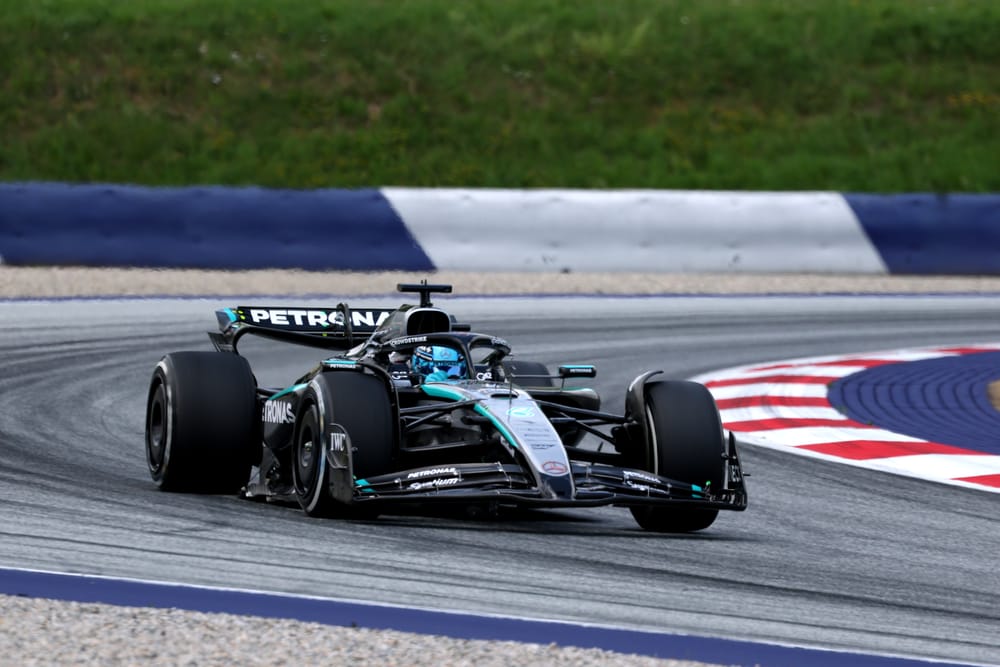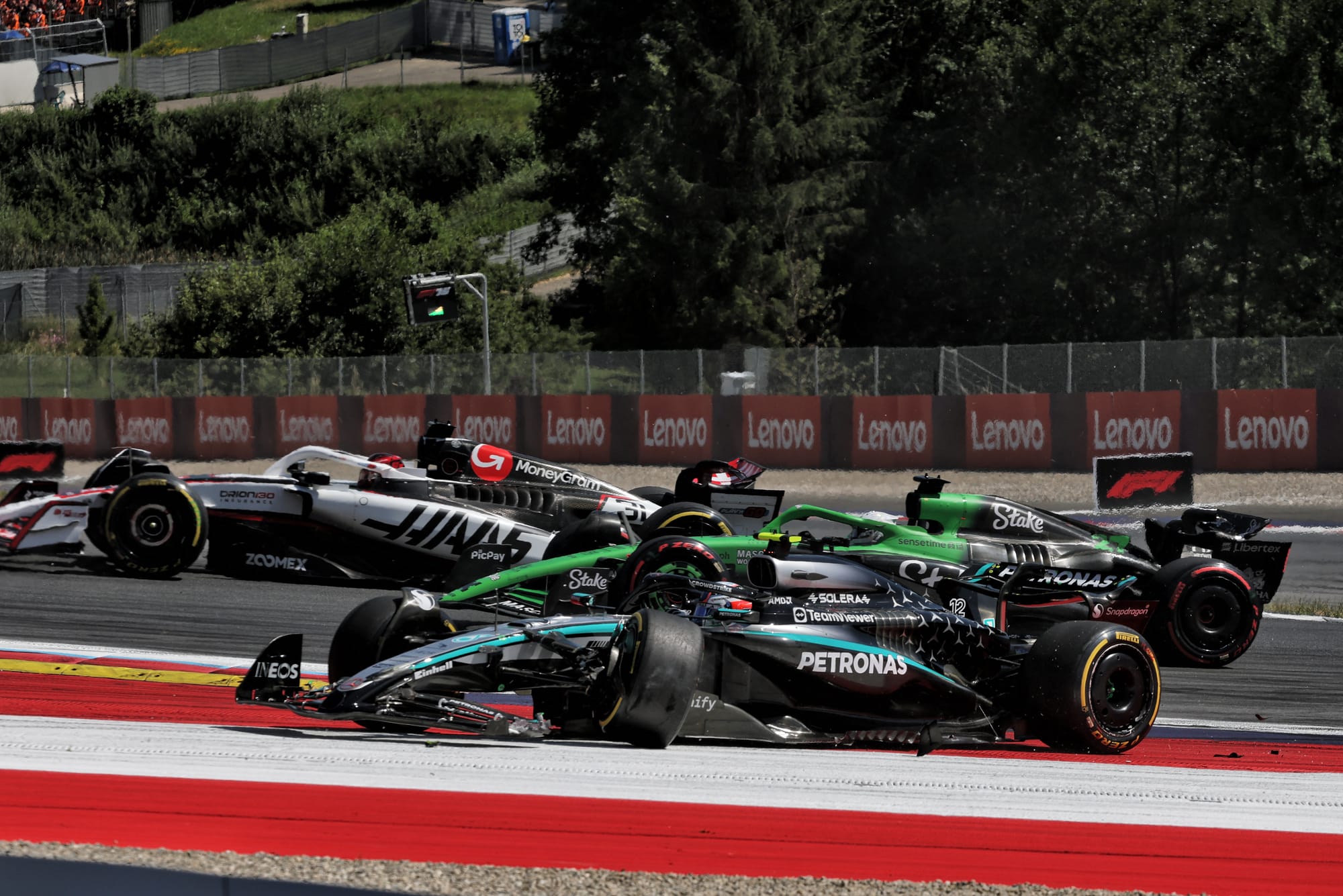Up Next

Mercedes reckons it 'shot itself in the knee' with an extreme set-up choice for Formula 1's Austrian Grand Prix that exacerbated its tyre overheating weakness.
Just one race on from dominating in Montreal, Mercedes endured a far more challenging time at the Red Bull Ring as it suffered a race performance that fell short of the team's lowered expectations.
Russell finished in fifth place, more than one minute behind race winner Lando Norris, on an afternoon where Mercedes had little in the way of pace.
As Russell said: "I was expecting a bad race, and it was worse than I even could imagine.
"The problem is so clear. Coming off the back of Canada with a win, with no tyre overheating, we're the quickest. But as soon as you get to a track where there's a bit of overheating, we drop off so much.
"The team have been working so hard for six months now to try to solve this issue. We've got ideas, but we're not really making major headway right now."
An extreme experiment
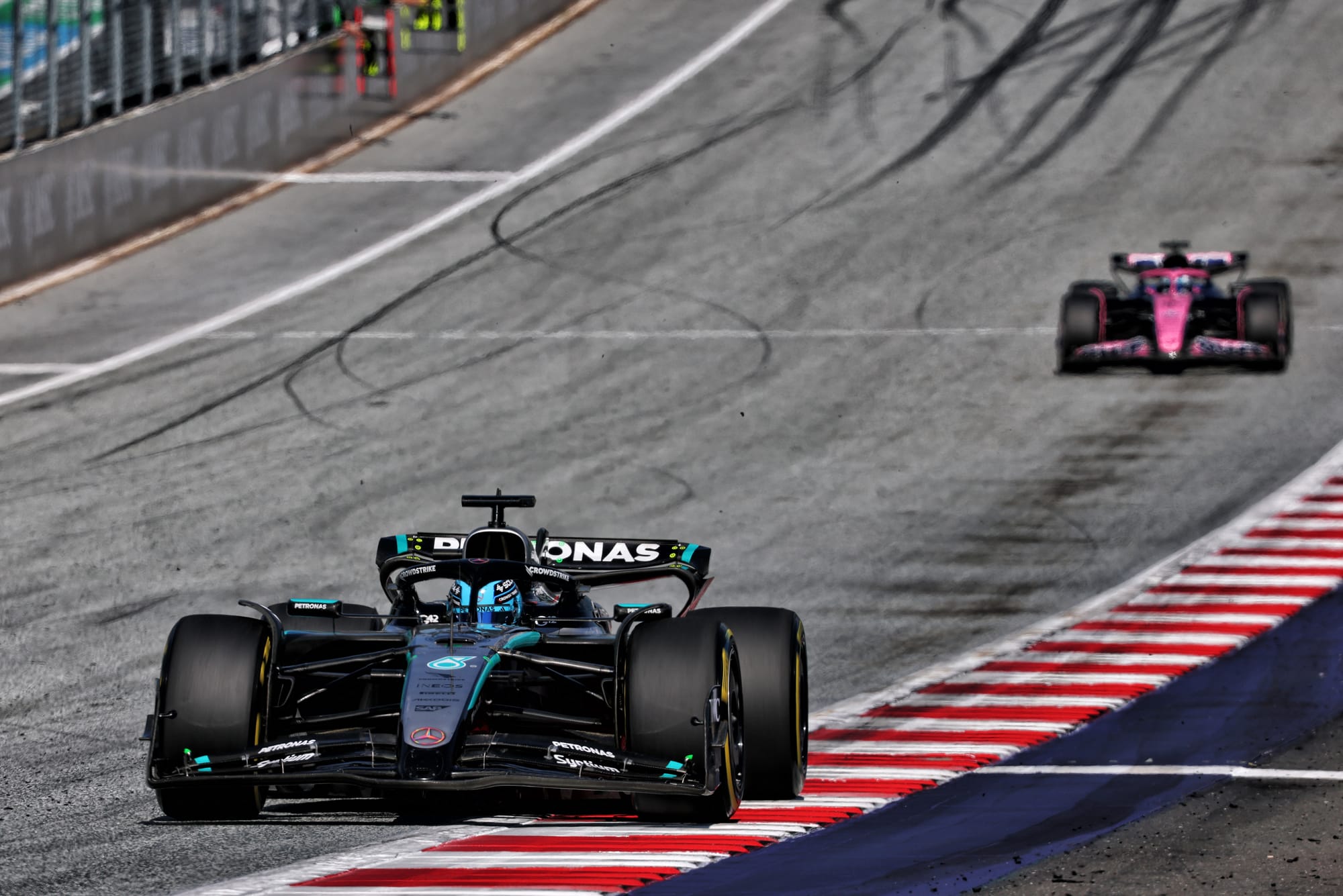
While there were three key characteristics in Austria that Mercedes is known to suffer from - its rough surface, its long corners, and the weekend's high temperatures - that did not completely explain why it was so far off the pace.
Instead, team boss Toto Wolff revealed that the cause of its woes was a bold mechanical set-up choice, which Mercedes hoped would help it better manage its rear tyre overheating problem but in the end triggered its downfall.
"The only positive I take from this race weekend is that we tried something extreme," explained Wolff.
"It was good in Montreal, and was a complete shot in the knee here, because we could have gone to the set-up that we had last year, and that would have put us on the podium maybe. But that is not what we tried."
Mercedes has been making mechanical adjustments to its car over recent races in a bid to make progress with this core tyre overheating issue that has clouded its current generation of designs.
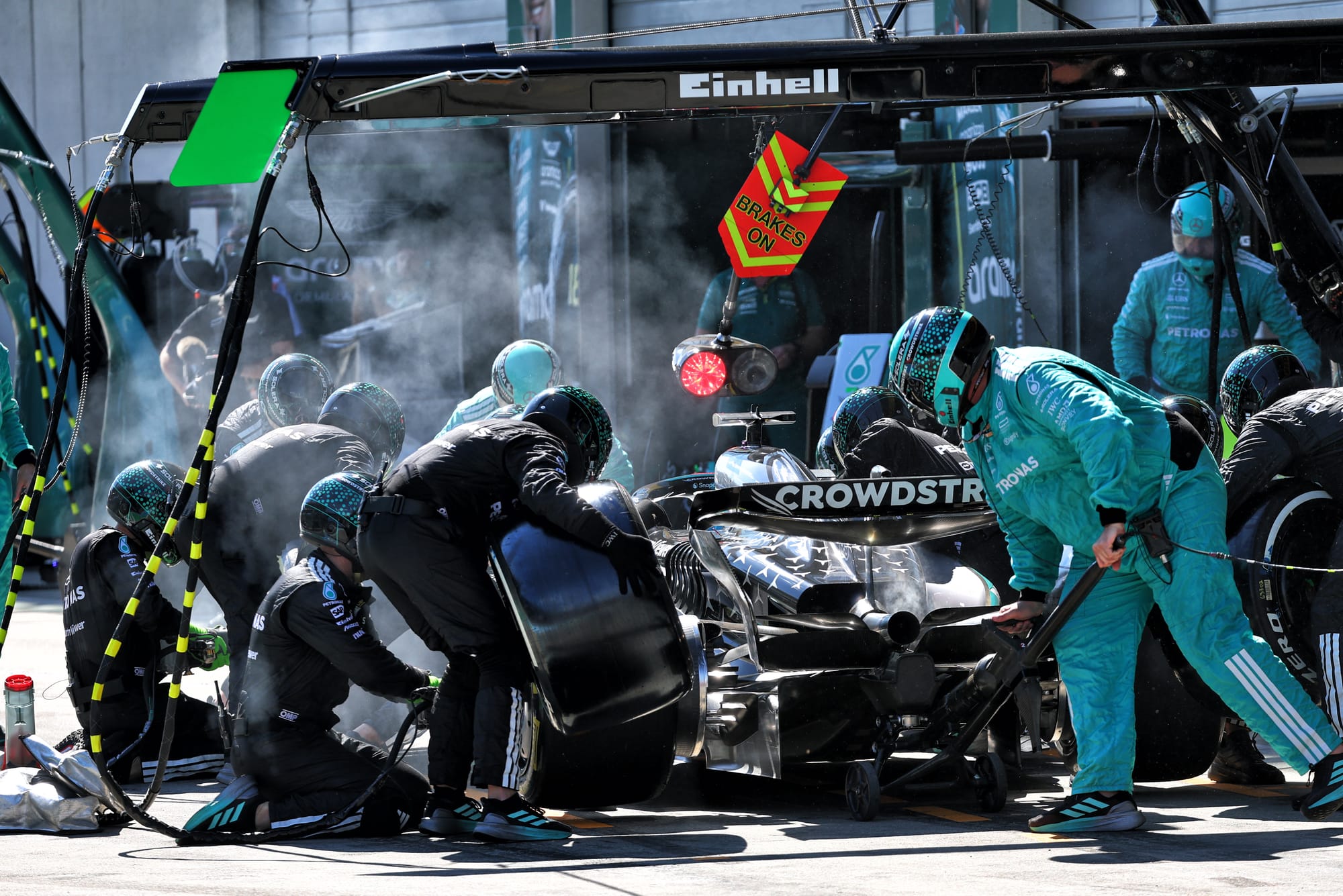
A revised rear suspension that first appeared at Imola before returning from the Canadian GP appeared to have helped unlock more potential, but the direction Mercedes took in Austria clearly showed it has more to learn.
Wolff added: "We were a minute behind the leaders, so that is clearly out of the ordinary what happened.
"We do experiment at the moment a little bit [with] how to put the car on track, and where we put the balance. And clearly, this one we got wrong, and we know that.
"So I think it's not only down to those factors of asphalt, long corners and heat. Clearly, that's not our sweet spot, but doesn't explain the gap. I think we know why, but with hindsight you always know."
Wolff did not want to offer too many details in terms of what Mercedes had done in Austria, but did suggest it was related to its mechanical platform - so was likely related to suspension settings and stiffness, which will have had an impact on its aero platform.
"There was something which we tried to take from Barcelona and from Montreal in terms of how we set the car up and where we put the mechanical balance," he said. "And that was clearly wrong.
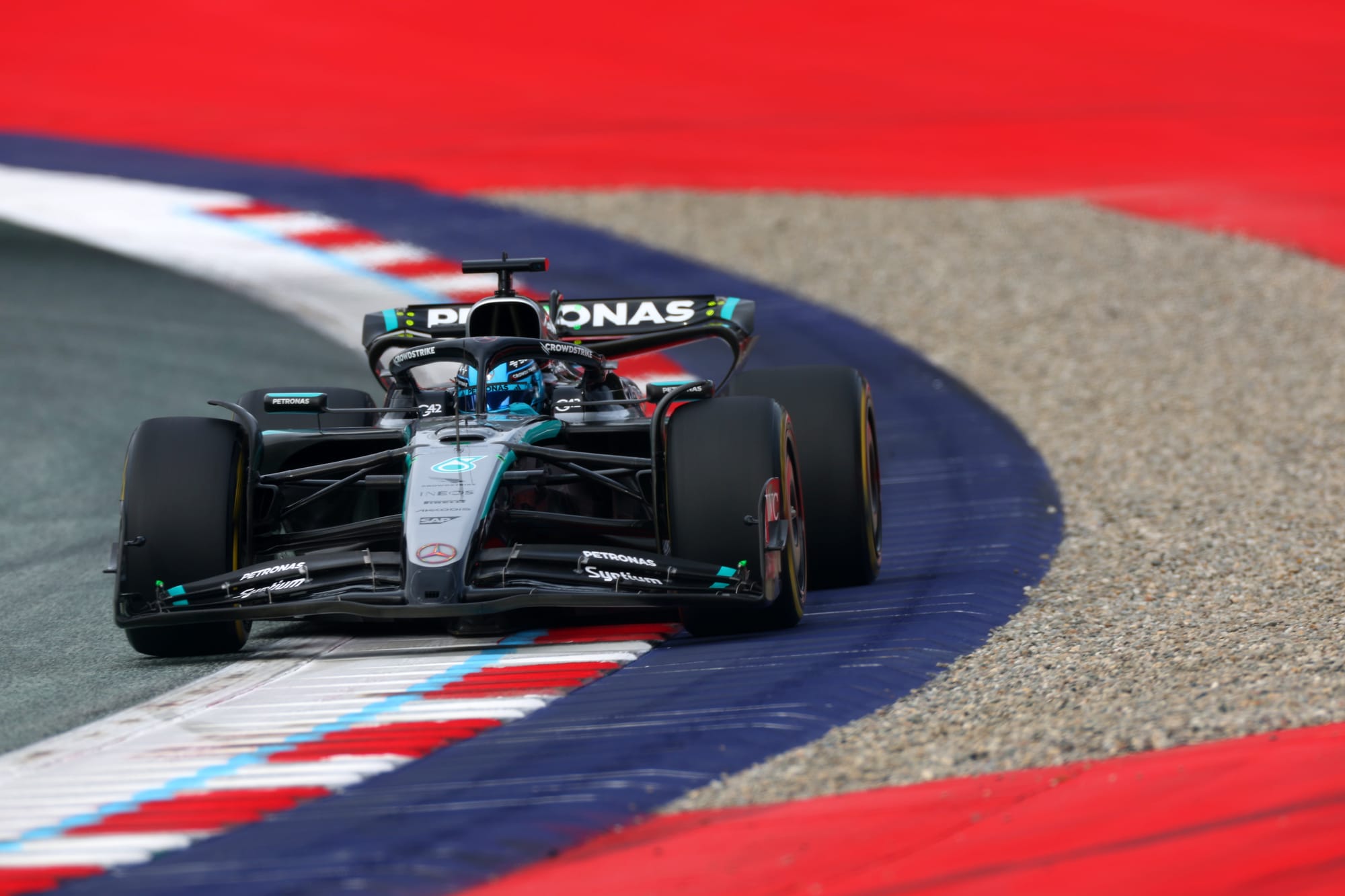
"We felt that there's a certain direction we wanted to pursue, which is perfectly logical for Canada, and a bit counterintuitive for Austria.
"Our long runs looked very good. So we thought Kimi's [Antonelli] long run was maybe second or third fastest, which was really good. So we can stick to that.
"Then obviously the temperatures got hotter, the grip ramped up, and then we kind of came to the conclusion that we should have maybe stuck to what we knew from last year here."
A Silverstone turnaround?
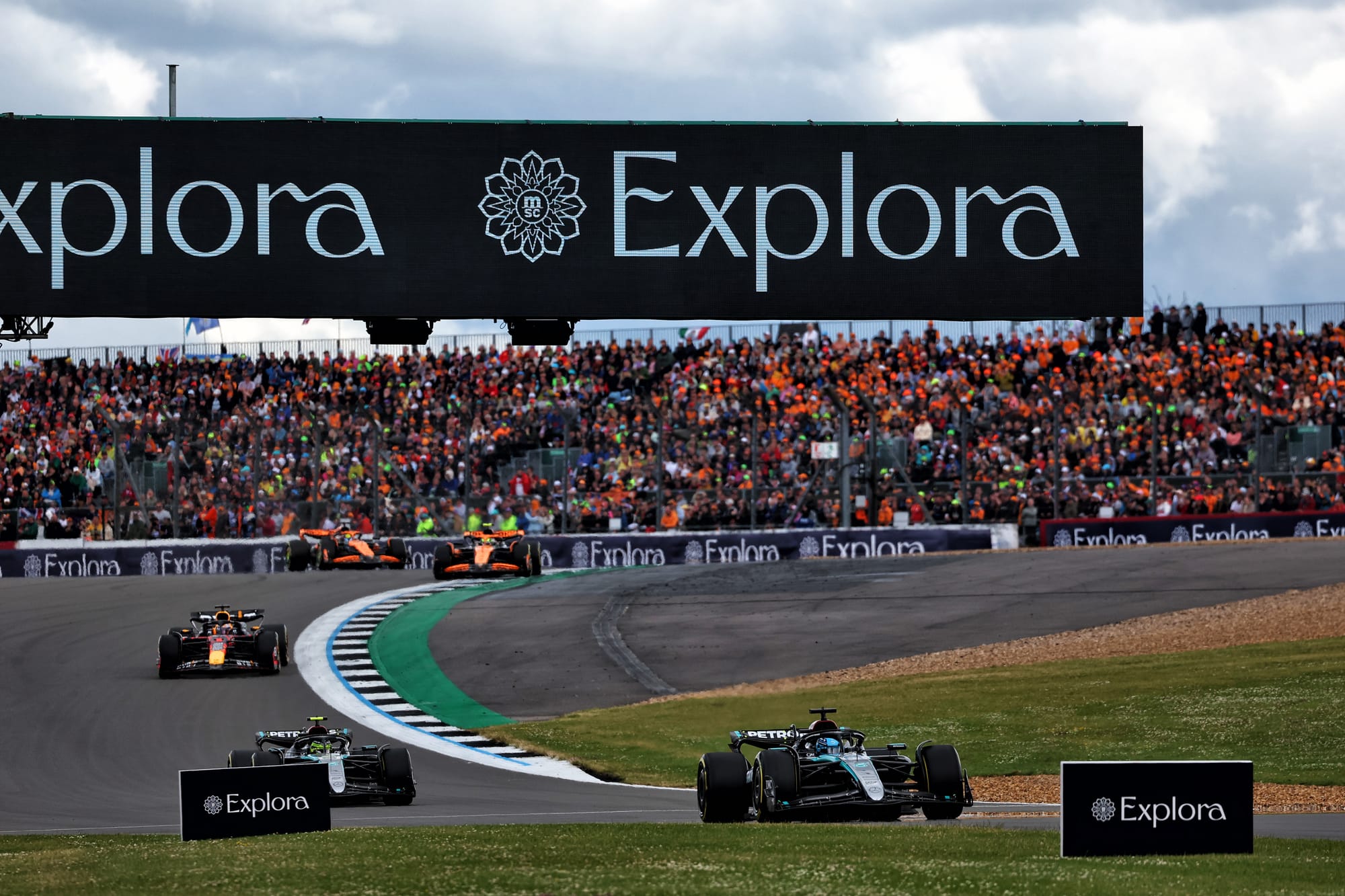
One of the realities of Mercedes' car sensitivities is that, having been on the back foot in Austria, it could easily bounce back with a victory at this weekend's British GP if the weather conditions are right.
It won last year's race with Lewis Hamilton, with Russell having taken pole before retiring while running fourth.
Asked about the prospects of this during a media briefing on Sunday, Wolff opened his phone to check the weather forecast for Silverstone before declaring a bit of confidence.
"Let me be super precise and watch my app," he smiled. "There we are: 20°C and 19°C, 50% chance of shower. OK, we win! That's clear.
"The DNA of these cars is incomprehensible. You have good tracks, you have bad tracks. The most intelligent engineers in the world can't undo that.
"There are these few tracks where we are competitive, and Silverstone was one of them in the past. And it's great because I have to wear a pullover, and that's always good for car performance."


